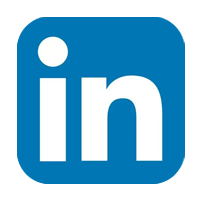Renovation Plan for Comprehensive Scheduling System of a Steel Enterprise
Comprehensive Dispatch System Transformation Plan for Steel Enterprises, Comprehensive Dispatch System Transformation Plan for Enterprises, Dispatch System Transformation Plan for Enterprises, Dispatch Transformation Plan for Enterprises, Comprehensive Dispatch Plan for Enterprises
User Requirement

Requirement Description:
1) Each factory's dispatch machine room needs to have optical cables to the company's main dispatch room, and it is required to provide at least 2 dispatch telephones;
2) If the network is connected by a loop connection, each factory's dispatch machine needs to provide a loop relay interface and an extension port to connect with the company's overall dispatch extension port and loop relay interface;
3) You can directly dial the extension number when making calls from the main dispatcher to various factories;
4) If the dispatch machine of a branch factory has a loop or other outbound function, you can also make a direct call to the main dispatch phone from each factory. If this function is not available, you can only make a second call.
As shown in the above figure, the original scheduling system involved 12 scheduling machines from 8 companies. It is technically difficult to unify these scheduling machines under the overall scheduling platform, and many branch scheduling machines have outdated technology and do not provide E1 digital signaling. At the initial stage, users do not want to change the existing scheduling mode and are not planning to establish a new scheduling system. Instead, they need to make full use of existing equipment and add multiple one click through scheduling stations in the main scheduling room. We have provided several different solutions for this.
2. Solution 1
-----Add our company's multimedia scheduling system to the relay interface of the switch in the main control room

Program features:
1) Our company's multimedia scheduling system is connected to the main dispatch room switch through E1 digital signaling. Our company's multimedia scheduling system can provide multiple control consoles and even provide a scheduling terminal for each branch factory;
2) Our company's scheduling system can record the routing information of each user. In addition to equal dialing between dispatch machines, it can also recognize secondary dialing tones and automatically call the user's extension number;
3) In addition, our dispatch center has the function of automatically finding users, that is, dialing the user's landline extension first. If the extension rings several times and no one answers or is busy, it will automatically dial the user's group small number (free) or full number (users who are not in the group number) through the GSM/CDMA channel. If there is no answer within the scheduled time (no ringback tone), it will inquire whether to connect to the wireless cluster network for intercom paging;
4) In this scheme, the video intercom terminal or tablet computer is connected wirelessly through WIFI. During voice calls, the video binding function can be selected, so that the images of the terminal devices can be instantly transmitted to the dispatch center;
5) This solution can fully utilize the existing scheduling system without changing the scheduling mode of the original factory, protecting the original investment;
6) The disadvantage is that it cannot fully utilize the functions of the multimedia scheduling system. The scheduling priority of the main scheduling room can only be lower than that of the branch scheduling system, and there is no forced disassembly or insertion function. The broadcast, multicast, and conference functions are relatively weak, and cannot flexibly achieve functions such as cross switch amplification and intercom.
3. Solution 2
-----Not changing the original scheduling structure, adding priority control, flexibly implementing multicast, meetings, etc., to facilitate the comprehensive implementation of various emergency plans.

Program features:
1) Cascade PCM devices between the access side of the factory dispatch network and the switch in the factory dispatch room, and connect them through the FXS interface and the factory dispatch switch respectively. Connect them to the factory dispatch network through the FXO interface;
2) Our company's IDM multimedia scheduling machine is configured at the central end, which achieves the scheduling function of client phones through the E1 channel in its fiber optic cable;
3) The design of this scheme does not change the original scheduling system structure. Through local modifications, voice scheduling and scheduling priority control are achieved;
4) Implement functions such as voice multicast scheduling and conference calls.
4. Solution Three
-----Fully integrate the video surveillance of the existing factory area and form an integrated audio and video scheduling system
Program features:
1) On the basis of the existing video surveillance network, it is connected to our company's multimedia dispatch machine MSAP-CP through an IP interface, so that the monitoring videos of various factory clients can enter our designed audio and video dispatch system;
2) The central end connects the multimedia scheduling machine to the large screen through a video image processor, and the video monitoring signals of each site can be displayed centrally on the large screen;
3) The original video surveillance system has been fully retained and connected to this scheduling system through several Ethernet ports.
5. Solution Four
-------A multimedia scheduling system that integrates command terminals, access devices, transmission devices, and PBX/IPPBX. Realize video intercom, conference, fax, SMS, email functions, and can also access various multimedia terminals, wireless WIFI terminals, audio and video intercom terminals, etc.

Program features:
1) Provide a complete set of audio and video command and dispatch system solutions for access, transmission, switching, and terminal;
2) Supports multiple transmission access methods such as optical transmission, E1 transmission, IP transmission, and wireless transmission, and can adapt to different network application environments;
3) The exchange method integrates traditional TDM and IP softswitch, which can meet the diverse needs of customers;
4) Realize the access of multiple communication terminals, including audio and video terminals, wireless radio intercom terminals, vehicle GPS/GPRS/WIFI/CDMA/GSM terminals, PC soft scheduling terminals, WIFI visual intercom terminals;
5) The command and dispatch center provides a dual screen (command and dispatch screen and comprehensive data display screen) dispatch console to achieve functions such as scheduling, meetings, and monitoring;
6) Provide a large screen display function for the conference center, which can display GIS information, vehicle management information, weather information, video surveillance screens, conference screens, audio and video interactions, and other content in the system;
7) The scheduling system has powerful voice scheduling functions, including group calls, group calls, direct calls, point calls, round calls, forced insertion, forced disconnection, monitoring, redialing, multi-party meetings, call hold, hold recovery, call waiting, call transfer, call proxy, temporary grouping, permission control, scheduling recording, and call recording;
8) Visual multimedia conference and monitoring function: Provides high-definition and standard definition cameras to meet the needs of duty leaders in emergency command and handling of emergencies, allowing them to hear voice and see the scene, ensuring accurate emergency command.
6. Command and dispatch software platform system
This platform software implements multi system integration applications, including in vehicle applications and fixed scheduling terminal applications, truly integrating office communication and command. It is the preferred product in the fields of emergency and office communication and command.
The software system of this platform (including scheduling, video, conference, large screen, GIS geographic information, emergency plans, etc.) has access ports that comply with the networked use of emergency scheduling and command in coal mining enterprises.

Introduction to the main functions of the command and dispatch software platform system
Traditional telephone function upgrade: It can seamlessly integrate and upgrade external system ordinary telephone terminals into visual dispatch communication command telephones;
Specialized touch screen dialing function: Leaders do not need to remember, visualized one click touch call to dial and connect calls;
Composite telephone terminal function: Leaders can use one phone to make PSTN, mobile calls, and also add network terminal calls such as shortwave, ultra shortwave, microwave, satellite, cluster, and VOIP;
Automatic binding function between phone and network: Without manual intervention, the system can automatically switch networks and select web pages to pop up according to the leader's dialing and answering calls;
Leader specific intelligent phone book function: No need for users to edit in advance, all numbers can be automatically generated during dialing and answering calls, gradually from few to many, and a commonly used phone number area will be automatically generated based on the frequency of dialing and answering calls;
Answering calls when busy function: The screen automatically displays a scrolling reminder function for incoming call numbers, and there will also be a voice reminder when a superior leader is queuing for a phone call and scrolling. Easy for leaders to answer immediately;
Desktop microphone and speaker all-in-one machine function: Provides an office conference all-in-one machine, equipped with a USB interface, small and exquisite to be placed on the office desktop. Its speaker and microphone functions are mixed together, suitable for places where leaders often hold office meetings;
Visual multimedia conference and monitoring function: Provides high-definition and standard definition cameras, and an external HDMI high-definition screen interface to meet the needs of on duty leaders in emergency command and handling of emergencies. They can hear voice and see the scene to ensure accurate emergency command.








 86-18710178699
86-18710178699  xufei@rdtcom.com
xufei@rdtcom.com